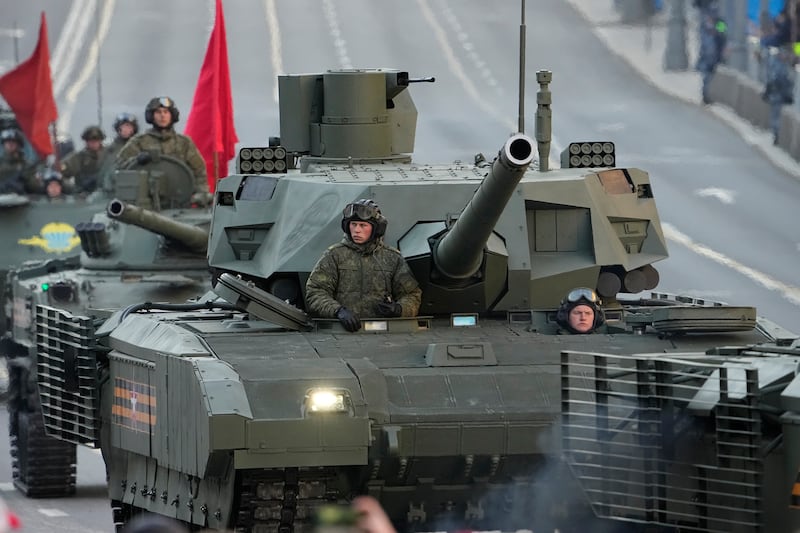Russia has deployed its latest tank, the T-14 Armata, to Ukraine, state media reported.
The tank represents a major departure from Russian armoured vehicle designs in recent decades and Russia hopes it will outclass the latest Nato armour being sent to the country.
The tanks are being used to fire on Ukrainian positions, but “have not yet participated in direct assault operations”, the RIA state news agency reported on Tuesday, quoting a source close the matter.

RIA said the tanks had been fitted with extra protection on their flanks and crews had undergone “combat co-ordination” at training grounds in Ukraine.
Until the first T-14 was produced in 2015, Russia’s most modern tank, the T-90, was a heavily upgraded version of the 1970s-era T-72, and was designed around its chassis.
The T-72 evolved from the T-64, which featured a revolutionary autoloading system that meant there was no need for a crew member in the turret to load the main gun.
This allowed for a high rate of fire and the distinctive low profile of the T-72 and subsequent Russian tanks.
The T-14 builds on this idea of a more efficient, semi-automated combat vehicle by having an uncrewed turret, maximising protection for the crew.
But the vehicle has been dogged by technical problems in recent years which delayed its entry into service. Mass production was due to start in 2018, but delays setting up a production line resulted in an expected delivery by maker Rostec of only 40 of the vehicles this year.
In January, the UK’s Ministry of Defence said Russia may be preparing to use the tank in Ukraine, but that it would be a “high-risk decision” because the vehicle was untested in combat conditions.
The assessment said commanders were “unlikely to trust the vehicle in combat”.
Russia is considered by some analysts to be low on armoured vehicles to fight in Ukraine, and has been taking obsolete tanks, including T-55s and T-62s dating to the 1950s and 60s, out of storage and sending them to the war zone. Some conflict observers say this is a stop-gap measure intended to buy time before reserves of more advanced tanks can be deployed.
Analysts say sanctions have prevented Russia from obtaining essential components for tank gun sights, suspension and other machine parts, such as ball bearings, many of which originate in western countries.






